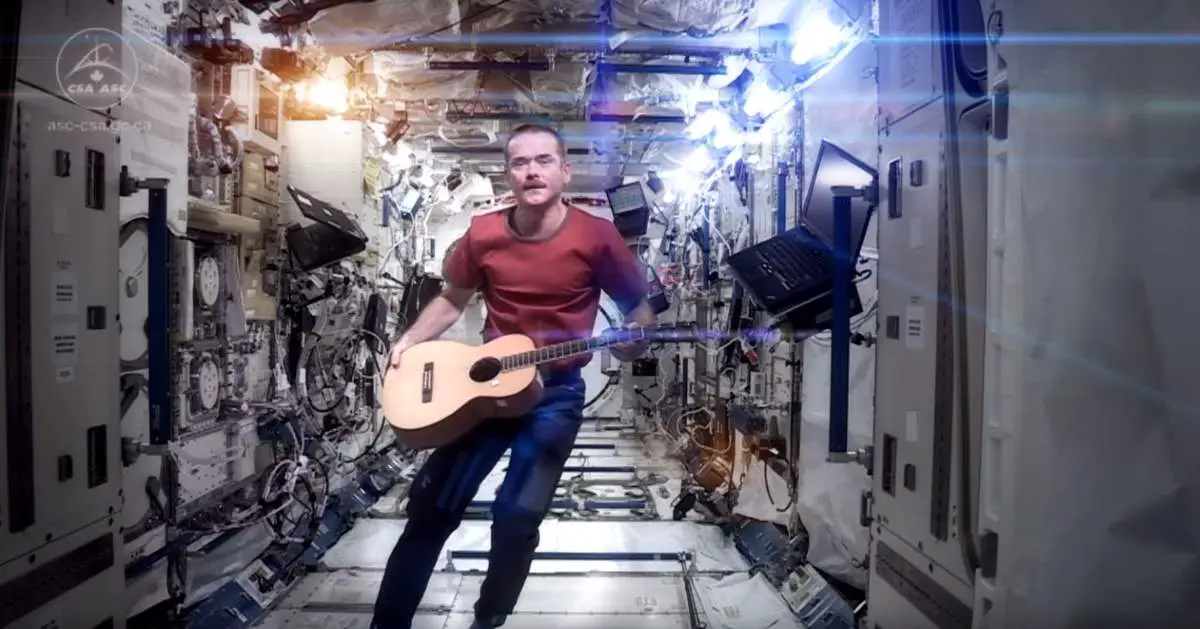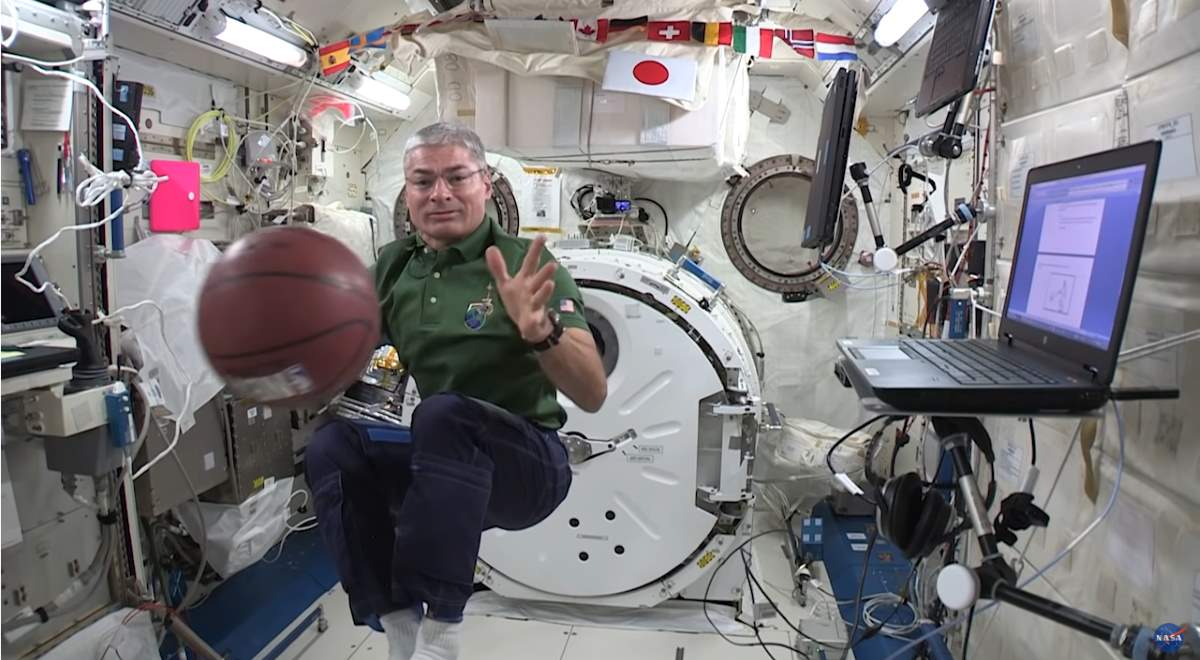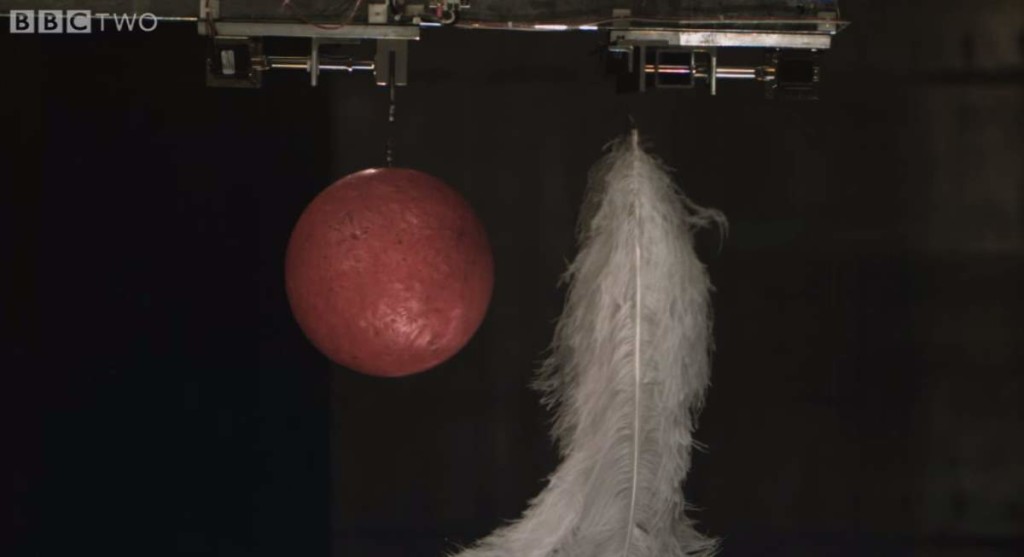We see images and videos from the International Space Station (ISS) where astronauts float in space freely. That’s because they’re in space, so there is no gravitational force of Earth there, right?
Wrong.
The International Space Station is in Low Earth Orbit (see notes 1) with an altitude of between 330 and 435 km (205 and 270 mi). It is so close to the Earth that on a clear day easily visible to the naked eye from the ground as it is the third brightest object in the sky (NASA has actually launched a new interactive map at its Spot the Station website).
At that altitude, the Earth’s gravity is about 90 percent of what it is on the planet’s surface – still pretty strong, right? To reduce the gravity of the Earth by a factor of one million, one needs to be at a distance of 6 million kilometers (around 3,728,227 miles) from the Earth – more than fifteen times the distance between the Earth and the Moon.

Robert Frost, Instructor and Flight Controller at NASA, says:
“People do not have a good understanding of what weightlessness is. They see astronauts floating around inside and outside of a spacecraft and reach the conclusion that there is no gravity.
Anywhere mass and space exist, gravity exists. Gravity is the curvature of spacetime due to the presence of mass. The gravitational influence from the Sun that keeps the Earth in orbit around the Sun is felt equally by the astronauts in space. The gravitational influence from the Earth that keeps the Moon and the ISS in Earth’s orbit is also felt by the astronauts floating inside and outside the spacecraft. If these influences were not felt, the astronauts would not stay in orbit.
At the altitude, the astronauts in the ISS inhabit, the gravitational influence from the Earth is 8.75 m/s2. That is only about 11% less than the 9.81 m/s2 felt by you and me, on the Earth’s surface.”
So, why do astronauts float in space? Here’s the explanation
The answer is that astronauts float in space because they are free-falling toward the Earth (see the “orbital speed” title below). They experience the same thing experienced by a roller coaster rider on an amusement park ride. In fact, every object orbiting another object in space is actually free-falling towards the object (see notes 2) that they are orbiting.
And, keep in mind that the ISS is in a vacuum – where gravity causes all objects to fall at the same rate regardless of the mass of the object. If a person drops a bowling ball and a feather on the Earth’s surface, air will make the feather fall more slowly. But if there were no air, they would fall at the same acceleration.
So, the ISS (or any spacecraft orbiting Earth or any other celestial body), its crew, and any objects aboard are all falling toward but around Earth. Since they are all falling together, the crew and objects appear to float when compared with the spacecraft. This is called microgravity, the condition in which people or objects appear to be weightless. So that’s why astronauts and other objects float in space.
In other words, the microgravity or Micro-g environment is more or less a synonym of weightlessness and zero-g but indicates that g-forces are not quite zero, just very small. The symbol for microgravity is µg.
Here is a beautiful video explaining what is microgravity and how it helps scientific research. Narrated by David Mitchell, the fifth “60 Second Adventures” series explores how and why we recreate microgravity conditions on Earth using “drop towers” and “parabolic flights” as well as asking people to spend a lot of time in bed; that way we can understand processes from bacterial resistance to human aging or even planet formation. Funded by the UK Space Agency.
Why do astronauts float in space? What is microgravity – and how does it help scientific research? Narrated by David Mitchell, the fifth “60 Second Adventures” series explores how and why we recreate microgravity conditions on Earth using “drop towers” and “parabolic flights” as well as asking people to spend a lot of time in bed; that way we can understand processes from bacterial resistance to human aging or even planet formation. Funded by the UK Space Agency. For more like this please subscribe to the Open University channel.
Orbital Speed
The International Space Station has an orbital speed of 7.67 km/s (27,600 km/h; 17,200 mph). Its orbital period is 92.65 minutes. In other words, the ISS orbits the Earth 15.54 times per day! Why is it moving so fast?
A beautiful explanation can be found here. It is really hard to put an object into Earth’s orbit – but it’s not because space is high up. It’s hard because you have to go so fast. Getting to space is relatively easy. The problem is staying there.
As explained above, the gravity in low Earth orbit is almost as strong as gravity on the surface. To avoid falling back into the atmosphere, you have to go sideways really, really fast.
The speed you need to stay in low Earth orbit is about 8 kilometers per second. Only a fraction of a rocket’s energy is used to lift up out of the atmosphere; the vast majority of it is used to gain orbital (sideways) speed. So, reaching orbital speed takes much more fuel than reaching orbital height.
But, once in orbit, you’re practically free-falling towards Earth, forever, and you float in space (or, hopefully, in your spaceship).

Related: What is an Orbit?
Notes
- Low Earth orbit (LEO) is an orbit around Earth with an altitude between 160 kilometers (99 mi) (orbital period of about 88 minutes), and 2,000 kilometers (1,200 mi) (orbital period of about 127 minutes).
- Freefall is any motion of a body where gravity is the only force acting upon it. An object moving upwards would not normally be considered to be falling, but if it is subject to the force of gravity only, it is said to be in free fall. The International Space Station is thus in free fall.
Sources
- Low Earth Orbit on Wikipedia
- What Is Microgravity? on NASA.gov
Free fall on Wikipedia- The micro-g environment on Wikipedia
- Orbital Speed on what-if.xkcd.com
- Moon Landings: All-Time List [1966-2025] - February 2, 2025
- What Is Max-Q and Why Is It Important During Rocket Launches? - January 16, 2025
- Top 10 Tallest Rockets Ever Launched [2025 Update] - January 16, 2025


